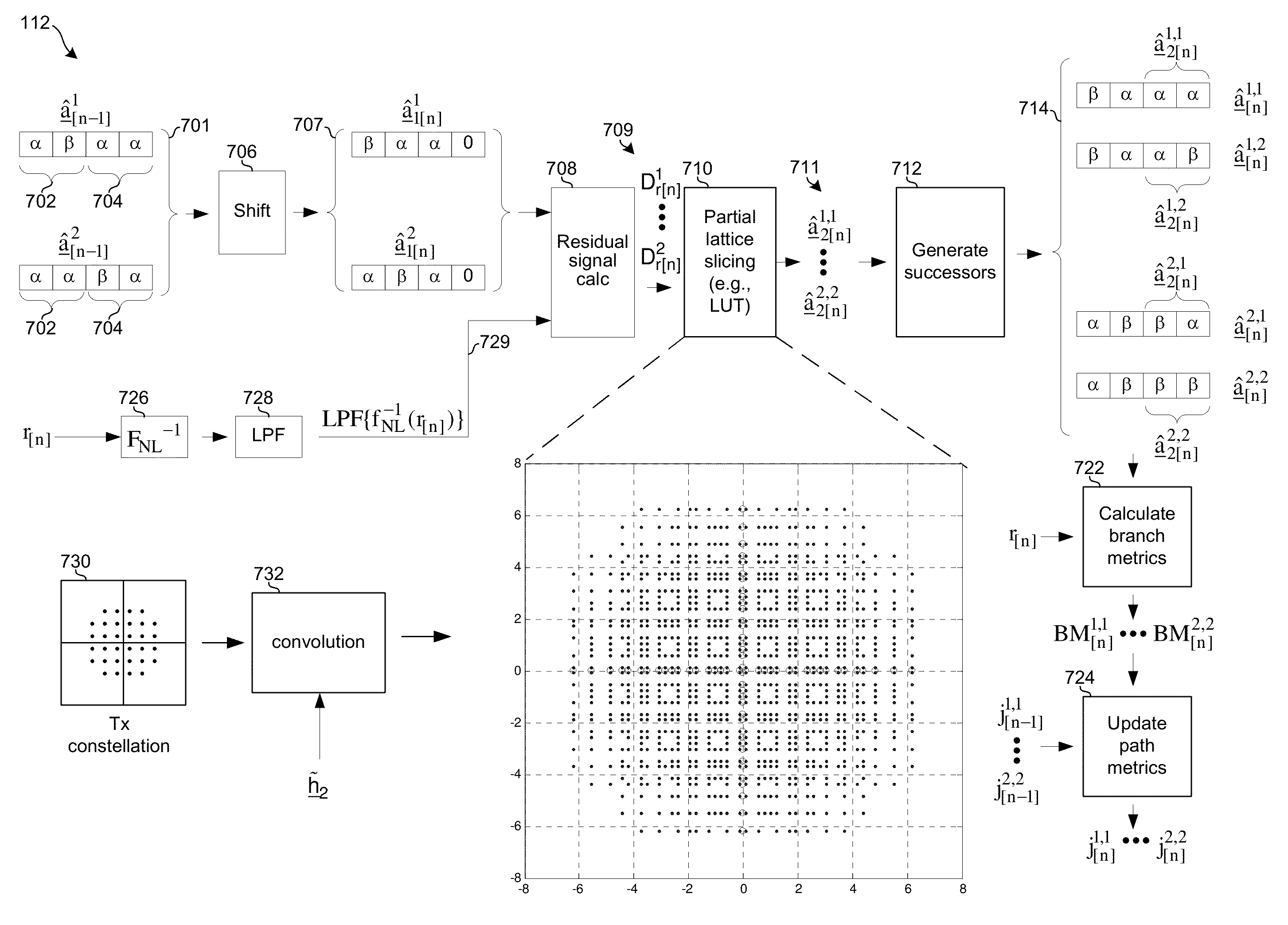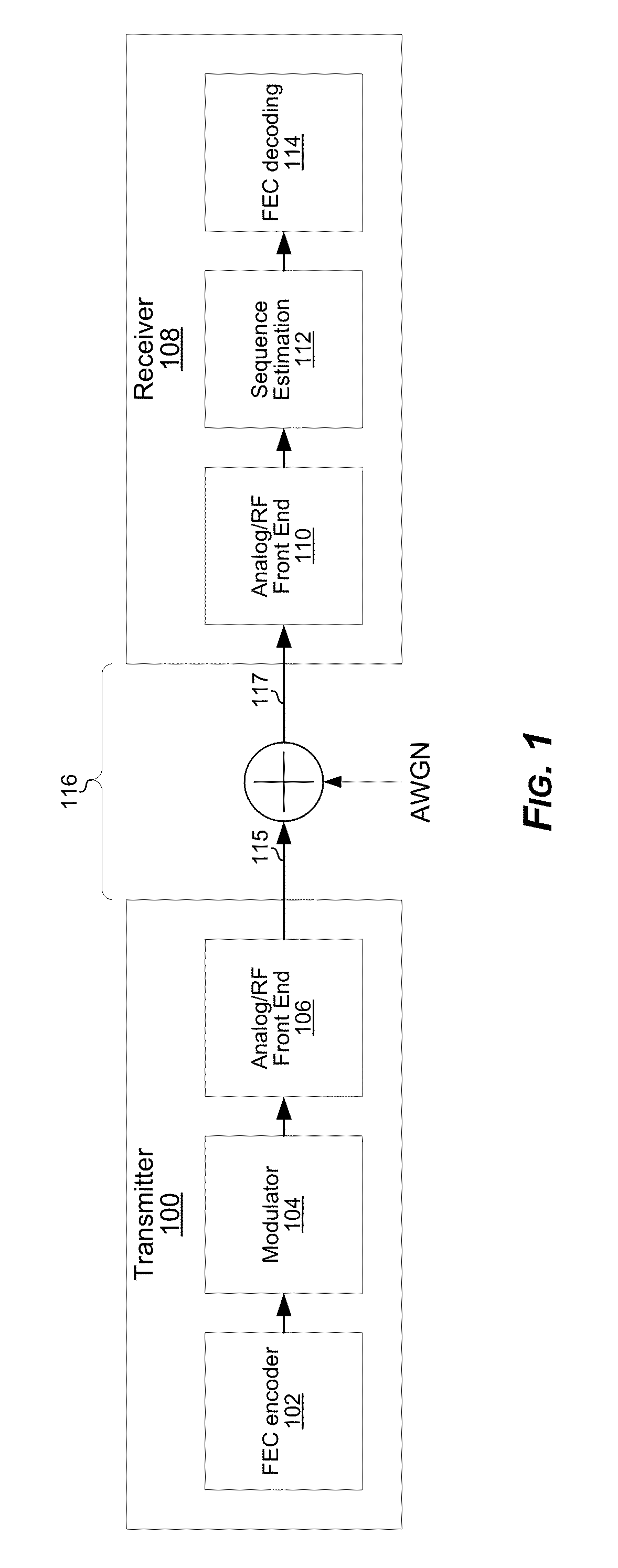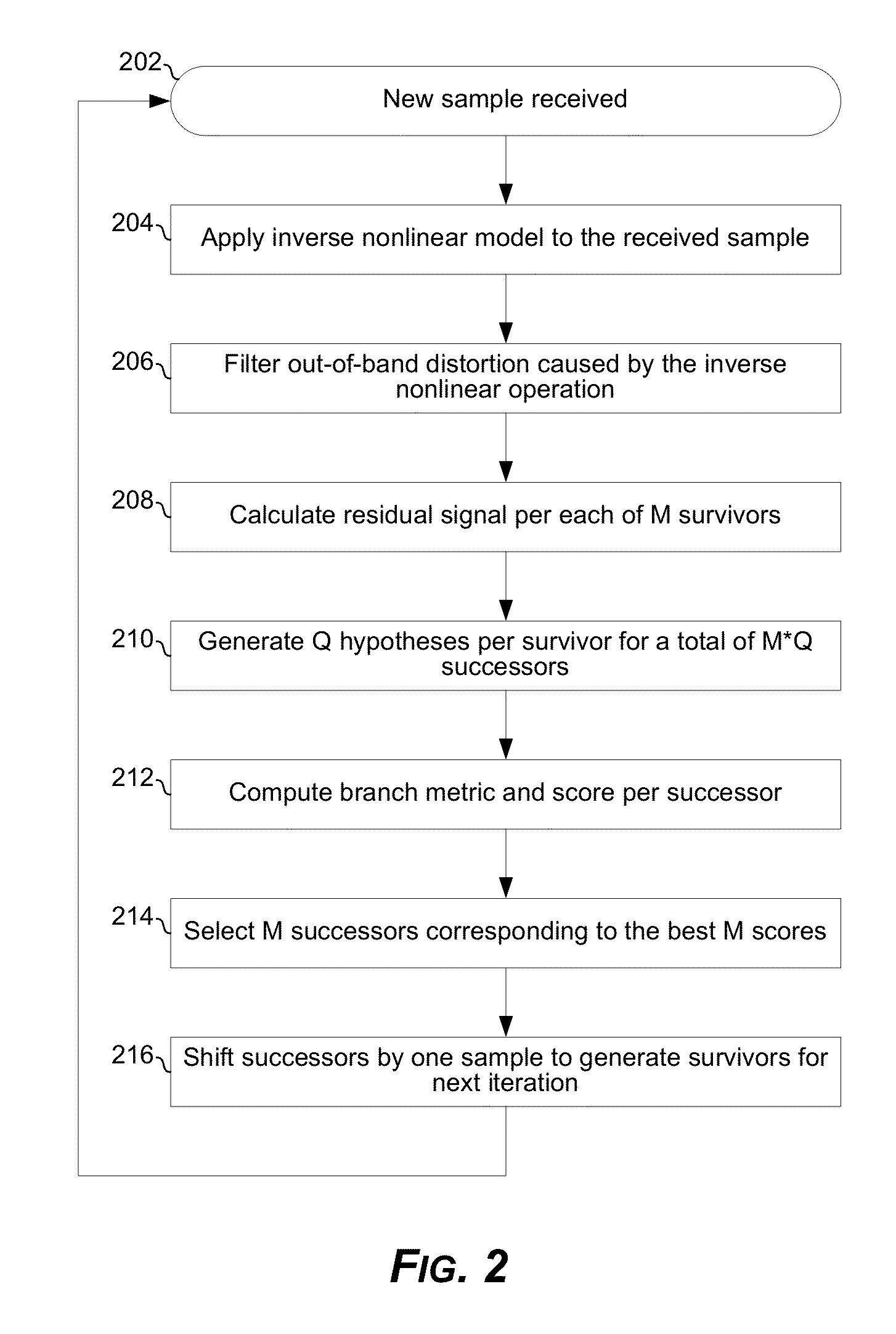Hypotheses generation based on multidimensional slicing
a multi-dimensional slicing and hypothesis generation technology, applied in the field of electronic signal processing, can solve problems such as huge complexity of processes
- Summary
- Abstract
- Description
- Claims
- Application Information
AI Technical Summary
Problems solved by technology
Method used
Image
Examples
Embodiment Construction
[0047]Expression (1) represents the recursive log-likelihood score (metric) function for ML detection:
J(ŝ[n])=J(ŝ[n−1])−|y[n]−â[n]T·{tilde over (h)}|2, (1)
where y[n] represents the sample of the received signal at time instant n. The received signal may be a partial response (PR) signal or may be a signal that was transmitted with near-zero inter-symbol interference (ISI) (e.g., via an root raised cosine (RRC) pulse-shaping filter) but which has ISI as a result of channel effects (e.g., multipath). {tilde over (h)} represents the N{tilde over (h)} PR filter taps coefficients, ŝ[n]=[â[n−N{tilde over (h)}+1], â[N−N{tilde over (h)}+2], . . . , â[n]], and each â[ ] represents the estimated state of a symbol of the received signal at time instant n. Full state space search such as the Viterbi algorithm is prohibitively complex for a large constellation size A and a long estimated composite response {tilde over (h)}. A practical solution will be to use reduced state sequence estimation (...
PUM
 Login to View More
Login to View More Abstract
Description
Claims
Application Information
 Login to View More
Login to View More - R&D
- Intellectual Property
- Life Sciences
- Materials
- Tech Scout
- Unparalleled Data Quality
- Higher Quality Content
- 60% Fewer Hallucinations
Browse by: Latest US Patents, China's latest patents, Technical Efficacy Thesaurus, Application Domain, Technology Topic, Popular Technical Reports.
© 2025 PatSnap. All rights reserved.Legal|Privacy policy|Modern Slavery Act Transparency Statement|Sitemap|About US| Contact US: help@patsnap.com



